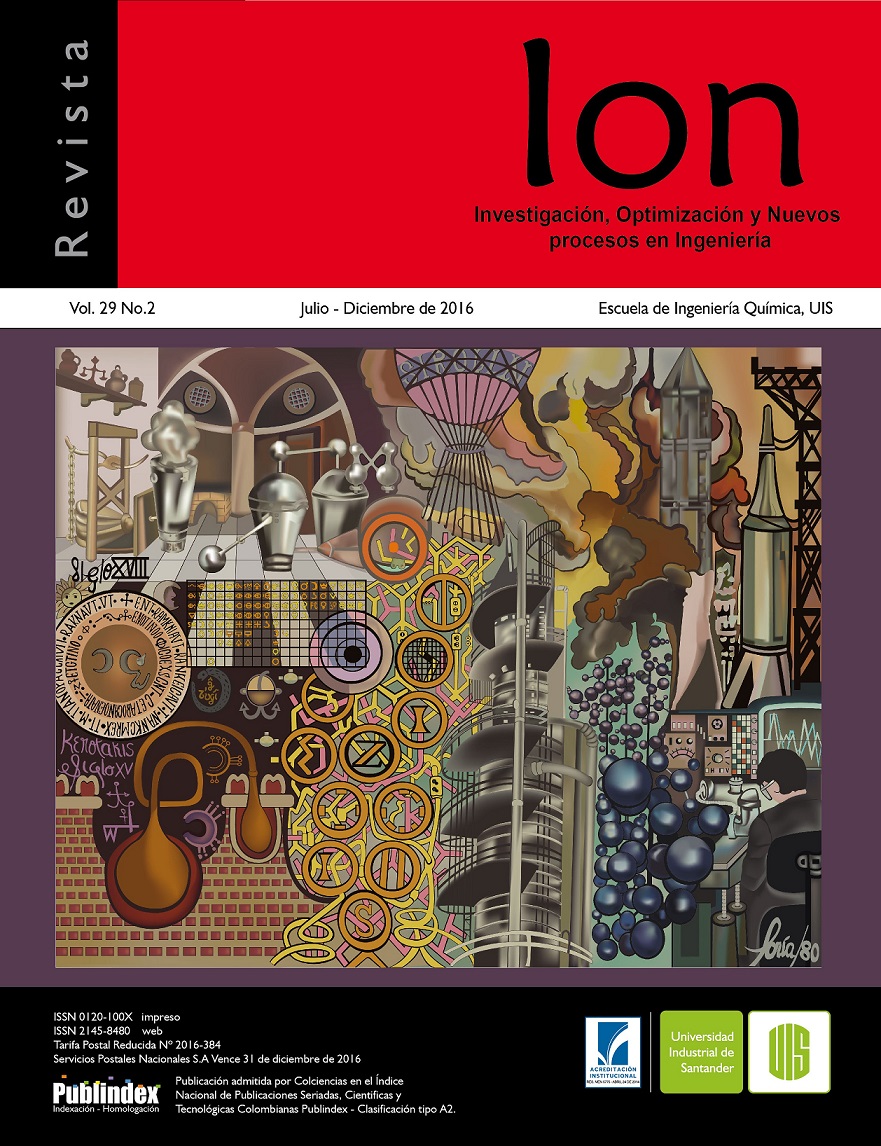Previsão do número de bromo de naftas colombianas usando espectroscopia NIR e métodos quimiométricos
Publicado 2016-12-15
Palavras-chave
- FT-NIR,
- a Nafta,
- o Número de Bromo,
- PCA,
- PLS
- MPR. ...Mais
Como Citar
Resumo
Neste trabalho, foram utilizados trinta e oito amostras de gasolina para desenvolver um método quimiométrica para prever o número de bromo. As amostras foram caracterizadas por Fourier no infravermelho próximo transformar espectroscopia (FT-NIR) espectros e foram correlacionados, utilizando análise de componentes principais semelhante (PCA). Modelos de calibração, o número de bromo (BN) é realizada por mínimos quadrados parciais de regressão (PLS) e regressão polinomial múltipla (MPR). As amostras de PCA classificadas em leves e pesados e deixou-se determinar as variáveis espectrais mais importantes. Estas variáveis estão localizados nas regiões entre 4000-4800 e 5200-6300cm-1. Os resultados obtidos usando esta metodologia são muito próximos daqueles obtidos por métodos padrão. Assim, este método pode ser uma alternativa para a análise de BN, o seu baixo custo e menor tempo de análise.
Downloads
Referências
[2] Falla FS, Larini C, Le Roux GAC, Quina FH, Moro LFL, Nascimento CAO. Characterization of crude oil by NIR. J Petrol Sci Eng. 2006;51(1– 2):127–37.
[3] Borges B, Acevedo S. Caracterización estructural de distintas fracciones aisladas del crudo extrapesado de Carabobo. Rev. Latinam. Metal. Mater. 2007;27(2):83–94.
[4] Mullins OC. The Modified Yen Model. Energy Fuels. 2010;24(6):2179–207.
[5] Bezerra De Lira L, Vera F, Fernandes C, Silveira AP, Stragevitchb L, Pimentel MF. Prediction of properties of diesel/biodiesel blends by infrared spectroscopy and multivariate calibration. Fuel. 2010;89:405–9.
[6] Orrego-Ruiz JA, Guzmán A, Molina D, MejíaOspino E. Mid-infrared Attenuated Total Reflectance (MIR-ATR) predictive models for asphaltene contents in vacuum residua: asphaltene structure–functionality correlations based on Partial Least-Squares Regression (PLS-R). Energy Fuels. 2011;25:3678–86.
[7] Orrego-Ruiz JA, Mejía-Ospino E, Carbognani L, López-Linares F, Pereira-Almao P. Quality Prediction from Hydroprocessing through Infrared Spectroscopy (IR) Energy Fuels. 2012;26:586–93.
[8] Meléndez LV, Lache A, Orrego-Ruiz JA, Pachón Z, and Mejía-Ospino E. Prediction of the SARA analysis of Colombian crude oils using ATR– FTIR spectroscopy and chemometric methods. J. Pet. Sci. Eng. 2012;90-91:56–60.
[9] Chung H, Ku M, Lee JS. Comparison of nearinfrared, infrared, and Raman spectroscopy for the analysis of heavy petroleum products Appl. Spectrosc. 2000;54:239–45.
[10]ASTM D1159–07, Standard Test Method for Bromine Numbers of Petroleum Distillates and Commercial Aliphatic Olefins by Electrometric Titration, ASTM International, West Conshohocken, PA, 2012.
[11] Carbognani L, Lopez-Linares F, Trujillo M, Wu Q, Carbognani J, Pereira-Almao P. On the determination of olefins in heavy oil, bitumen and their upgraded products. Div. Energy Fuels. ACS Energy Fuels Preprints. 2012;57:685-8.
[12]Fusheng O, Xu PXuhong, Z, Xuan L, Huixin W. Effect of Operating Conditions on Olefin Distribution in FCC Gasoline as Part of an Olefin Reduction Process China Pet. Process. Petrochem. Process. 2010;12:34-42
[13]Wold S. Chemometrics; what do we mean with it, and what do we want from it? Chemom. Intell. Lab. Syst. 1995;30:109–15.
[14]N. Aske, H. Kallevik, J. Sjöblom. Determination of saturate, aromatic, resin and asphaltenic (SARA) components in crude oils using infrared and near-infrared spectroscopy. Energy Fuels. 2001;15:1304–12.
[15]Satya S, Roehner RM, Deo MD, Hanson FV. Estimation of properties of crude oil residual fractions using chemometrics. Energy. Fuels. 2007;21:998–1005.
[16]Syunyaev RZ, Balabin RM. Frequency dependence of oil conductivity at high pressure. J. Disp. Sci. Technol. 2007;28:419-27.
[17]Syunyaev RZ, Balabin RM. Polarization of Fluorescence of Asphaltene Containing Systems. J. Disp. Sci. Technol. 2008;29:1505- 14.
[18] Kaplan IG. Intermolecular Interactions: Physical Picture, Computational Methods and Model Potentials. México: John Wiley & Sons; 2006.
[19] Wold S, Sjöström M, Eriksson L. PLS-regression, a basic tool of Chemometrics. Chemom. Intell. Lab. Syst. 2001;58:109-30.
[20] Cheung V. A comparative study of the characterization of colour cameras by means of neural networks and polynomial transforms. Color. Technol. 2004;120:19-25

